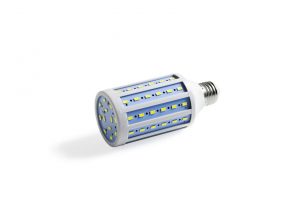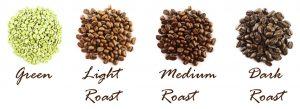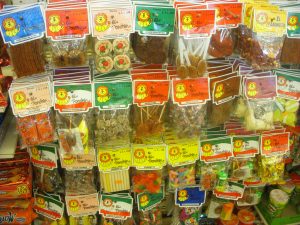LED bulbs are the most efficient and durable lighting sources on the market at the time. Although they are slightly more expensive than other types of light bulbs, their price has dropped considerably. These bulbs use up to 80% less energy than incandescent bulbs, but produce the same amount of light. Most LED bulbs should last at least 15,000 hours, but most have a lifespan of up to 50,000 hours, when used on average 3 hours a day.

An LED corn light is an assembly of lots of LEDs placed on a metal heat-dissipation structure. Like other LED lighting options, it successfully replaces even the most efficient economic bulbs.
The difference between LED bulbs and LED corn light bulbs is the unique design of the latter (they have the shape of a corn cob, and the LEDs resemble corn kernels). They have the advantage of providing 360 degree lighting and having an ergonomic design. They are resistant to shocks, vibrations, low temperatures and do not release heat in the atmosphere. A LED corn light bulb has no ultraviolet and infrared emissions and does not contain substances that can affect the environment.
LED corn light bulbs area easy to use – just like screwing in regular light bulbs. Most fixtures have screw-in sockets that accept LED corn light bulbs.
Other features:
- easily adjustable
- reduction of electricity costs by 80-90%
- significantly reduced maintenance costs
- resistance to vibrations and mechanical shocks (LED corn light bulbs do not break even if they are dropped)
- trouble-free operation at extreme temperatures (both very low or very high)
- solid electronic circuits
- TVS internal protection
- balanced light, without fluctuations (in case of voltage variations)
- reduced eye strain and headaches
- increased efficiency of the lumens
- environmentally friendly
- no UV or IR radiation
- Substantial reductions in CO2 emissions
- 100% recyclable
- excellent return on investment
- very long guaranteed lifespan
Different uses of LED corn light bulbs
- Street lighting
- Road lighting
- Lanterns
- Lighting globes
- Industrial workshop lamps
- Metal halls, warehouses
- Applications requiring high power lighting
LED corn light bulbs should not be chosen by their power, as the lighting efficiency differs from one LED lighting manufacturer to another, so two bulbs with the same power can emit a different light intensity. That is why we recommend that you consider the luminous flux, instead of the power. The brightness of the bulb or the amount of light it emits is determined by the luminous flux, which is measured in lumens (lm).
Warm light vs. Cold light
While the incandescent or halogen bulb emits a warm white light, modern light bulbs have the property of providing various color temperatures. Just like regular LED bulbs, LED corn light bulbs can emit from warm white light to cold white light, on a scale from 2700 K (warm white) to 6500 K (cold white). The color temperature is what makes the light look warm or cold. A low temperature produces a warmer and more relaxing light, while a higher temperature emits a colder and more energizing light, suitable for work and concentration.


 Colorado wholesale suppliers, it is important to know about the different types of wholesalers out there, because this will help you make the right choice. Making this difference is not easy, especially if you are inexperienced, because wholesalers identify themselves in various ways: manufacturers, dealers, merchants, distributors etc.
Colorado wholesale suppliers, it is important to know about the different types of wholesalers out there, because this will help you make the right choice. Making this difference is not easy, especially if you are inexperienced, because wholesalers identify themselves in various ways: manufacturers, dealers, merchants, distributors etc.